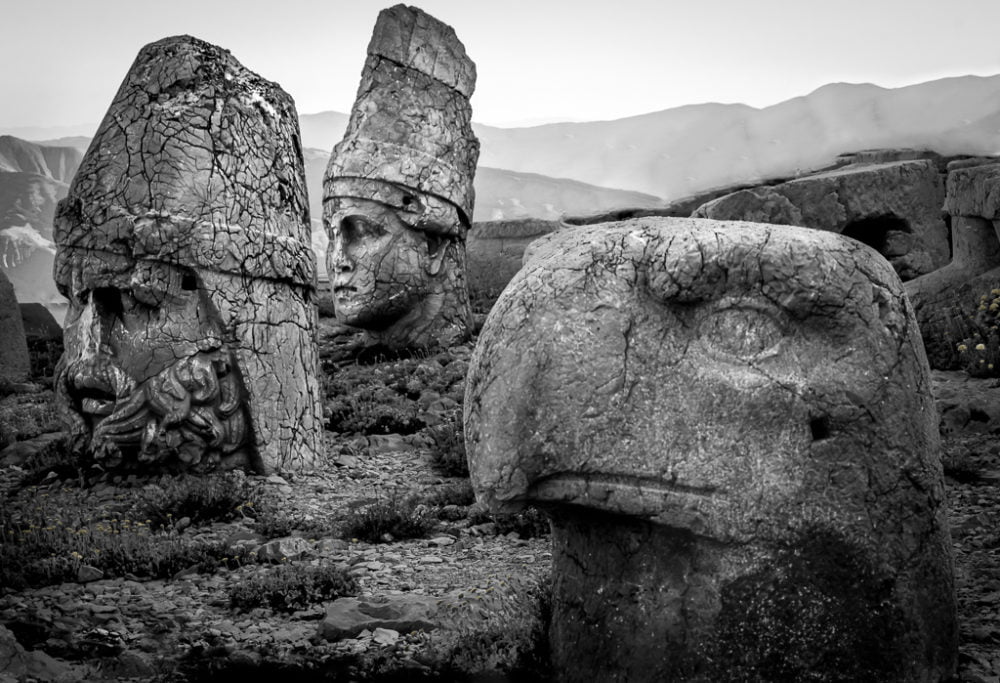Welcome to part two of our article on UNESCO World Heritage sites in Türkiye.
If you missed part one, you can read it here:
https://fethiyetimes.com/unesco-world-heritage-sites-in-turkey-part-one/
Sites on the World Heritage List (Cultural) – continued …
Great Mosque and Hospital of Divriği
The stunning Divriği mosque and madrasa (seminary) complex has been declared by UNESCO to be one of the most important centres of cultural heritage in the world.
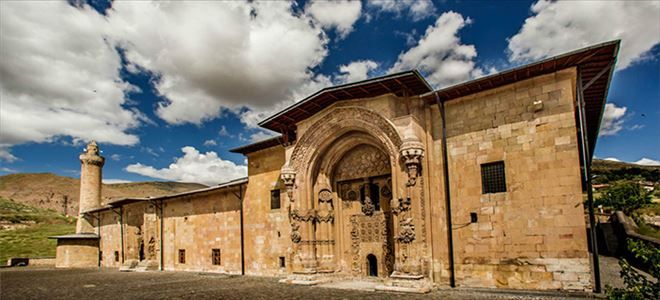
Its exceptional remoteness – two hours drive from Sivas – makes it one of the least visited sites. Originally a Byzantine stronghold, Divriği was taken by the Seljuks who commissioned the building with its lavishly carved portals. The Great Mosque and Hospital of Divriği was added to the World Heritage List in 1985.
Hattusha: the Hittite Capital
Hattuşa was once a great and impressive city, defended by stone walls over 6km in length. Today the ruins consist mostly of re-constructed foundations, walls and a few rock carvings, but there are several more interesting features, including a tunnel and some fine hieroglyphic inscriptions preserved in situ.

The site itself is strangely atmospheric, almost eerie, exciting for its ruggedness and high antiquity rather than for its buildings or reliefs. Hattusha: the Hittite Capital was added to the World Heritage List in 1986.
Historic Areas of Istanbul
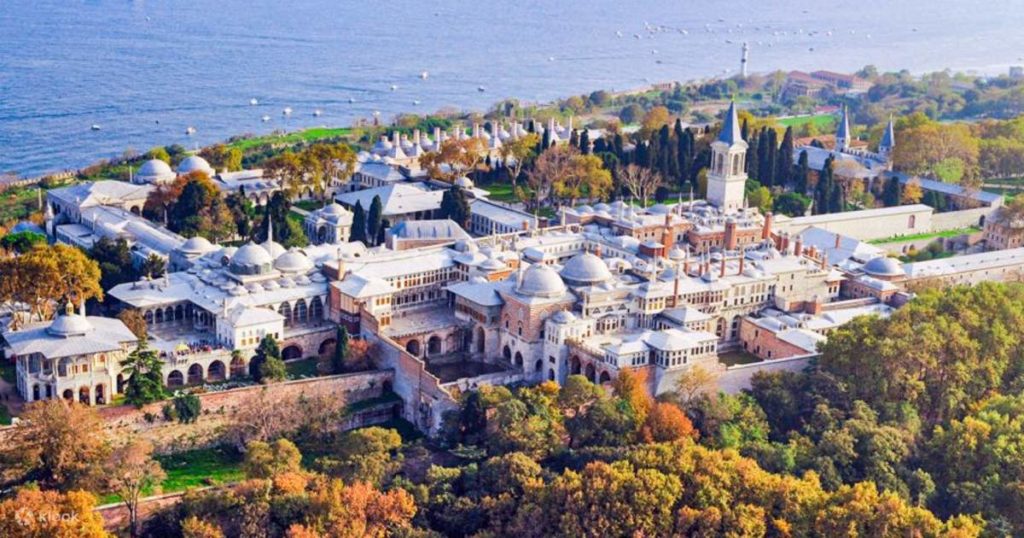
The Historic Areas of Istanbul is a group of sites in the capital district of Fatih in the city of Istanbul, Türkiye.
From ancient ruins to 16th-century masterpieces, here are some of the must-see UNESCO World Heritage-listed sites and landmarks in Istanbul. These areas were added to the UNESCO World Heritage List in 1985.
- Sarayburnu
- Topkapi Palace
- Hagia Sophia (Aya Sofia)
- Sultan Ahmed Mosque
- Hagia Irene
- Zeyrek Mosque
- Suleymaniye Mosque
- Little Hagia Sophia
Click on the link below for more information about these sites courtesy of viator.com
Must-See UNESCO World Heritage Sites in Istanbul
Nemrut Dağ
The 7,000-foot-tall mountain, Nemrut Dağı (Mount Nemrut), houses a historical site unlike any other in the country.
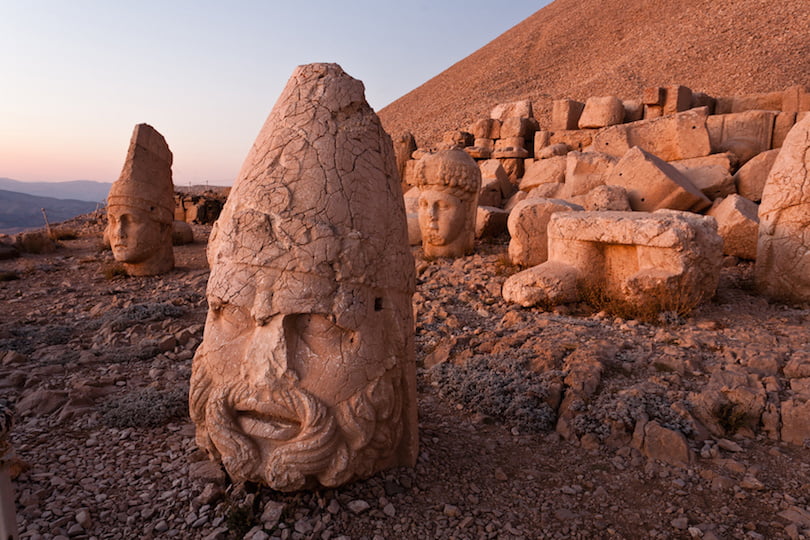
Notable for its ancient tomb and temple complex, which includes numerous massive statues of Greek and Persian gods, the stunning site was constructed by King Antiochus I in 62 BC and is today considered to be the most significant monument of the Kingdom of Commagene. Nemrut Dağ was added to the World Heritage List in 1987.
You can read our previous article about Nemrut Dağ here.
Neolithic Site of Çatalhöyük
Çatalhöyük is Türkiye’s most important neolithic and Bronze Age site and the earliest known city in the world.
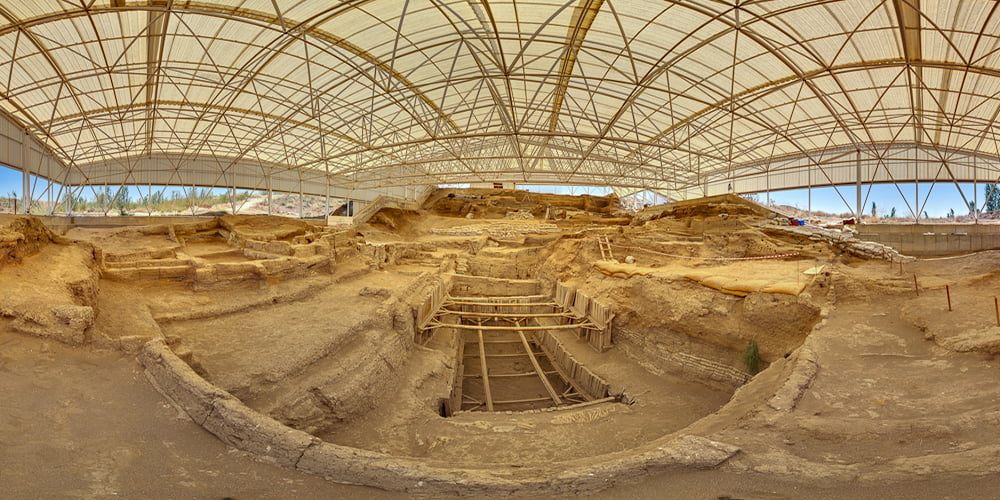
The sophisticated tools, jewellery, and sculpture found here, and above all the wall paintings decorating the shrines, all dating from 6800 BC, indicate a remarkably advanced civilisation in Anatolia at this time. These items are now in the Ankara Museum of Anatolian Civilizations, but the site is nevertheless impressive for its size. The Neolithic Site of Çatalhöyü was added to the World Heritage List in 2012.
Pergamon and its Multi-Layered Cultural Landscape
Pergamon is, for the most part, a site of quiet classical splendour. Its ruins – especially the Asklepion and Acropolis – are so extraordinary that they were inscribed on Unesco’s World Heritage List in June 2014, the 999th site in the world (and the 14th in Türkiye) to be so honoured.
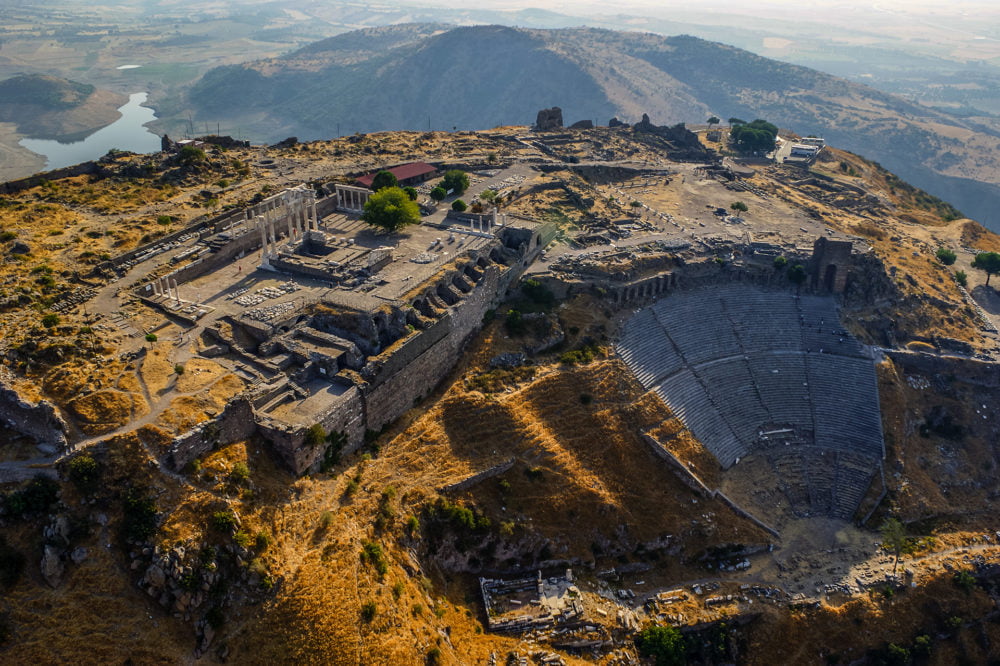
The thermal springs of Pergamon made the city one of the principal centres of healing and beauty. One of the major thermal spas of Pergamon is within the Sanctuary of Asclepius (Güzellik Ilıcası). It is believed to have been commissioned by King Euamens of Pergamon, and its healing and beauty properties were enjoyed by Cleopatra.
Selimiye Mosque and its Social Complex
The square Mosque with its single great dome and four slender minarets dominates the skyline of the former Ottoman capital of Edirne. Sinan, the most famous of Ottoman architects in the 16th century, considered the complex, which includes madrasas (Islamic schools), a covered market, a clock house, an outer courtyard and a library, to be his best work.
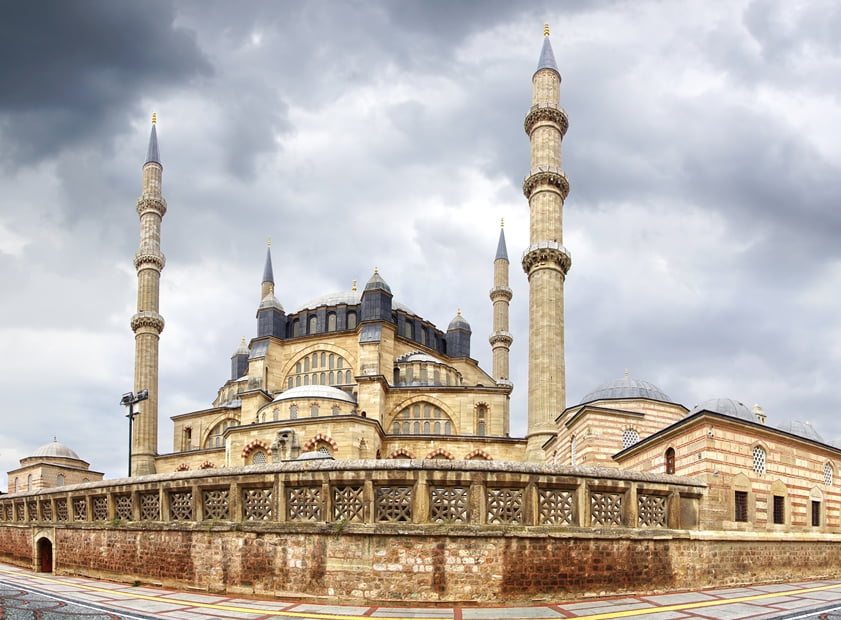
The interior decoration using Iznik tiles from the peak period of their production testifies to an art form that remains unsurpassed in this material. The complex is considered to be the most harmonious expression ever achieved of the Ottoman külliye, a group of buildings constructed around a mosque and managed as a single institution. Selimiye Mosque and its Social Complex were added to the World Heritage List in 2011.
Wooden Hypostyle Mosques of Medieval Anatolia
This serial property is comprised of five hypostyle mosques built in Anatolia between the late 13th and mid-14th centuries, each located in a different province of present-day Türkiye. The unusual structural system of the mosques combines an exterior building envelope built of masonry with multiple rows of wooden interior columns (“hypostyle”) that support a flat wooden ceiling and the roof. These mosques are known for the skilful woodcarving and handiwork used in their structures, architectural fittings, and furnishings.
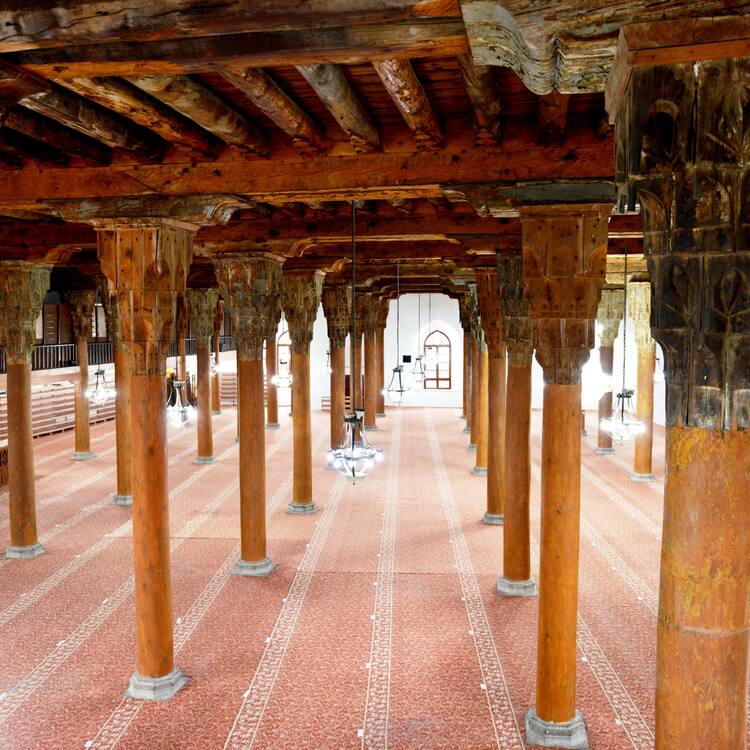
Wooden Hypostyle Mosques of Medieval Anatolia were added to the World heritage List in 2023.
Xanthos-Letoon
Xanthos, with its fine Roman theatre and Lycian pillar tombs, is a magnificent site, as befits the remains of Lycia’s greatest city. Any tour of Xanthos should begin with the theatre and its extraordinary pair of pillar tombs, 8m high.
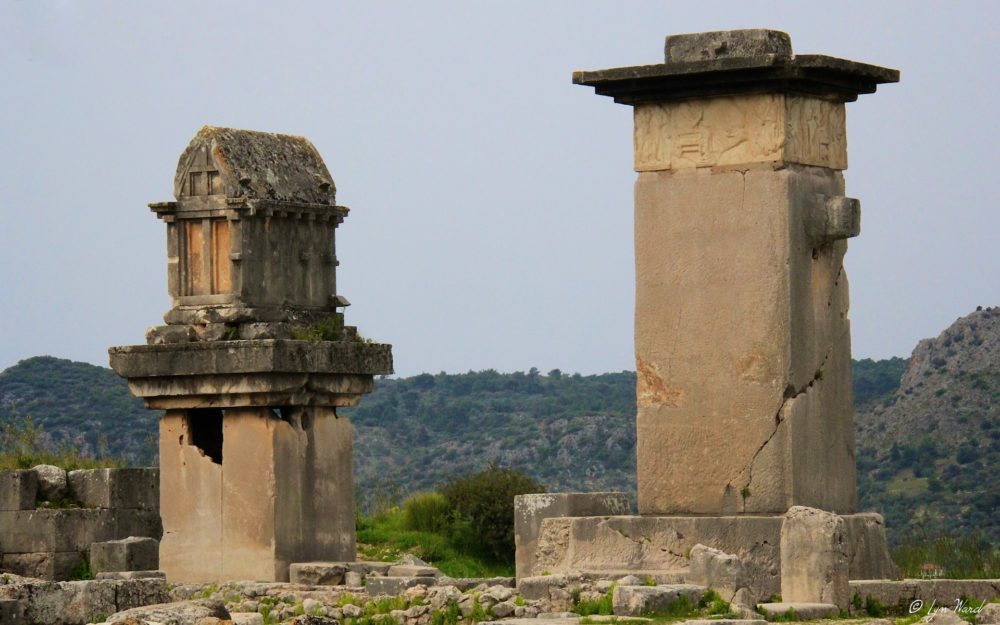
On the acropolis stand the remains of a Lycian royal palace, overlooking the river valley. On the other side of the car park is an extensive Byzantine basilica with mosaic flooring and further uphill is the necropolis, with a cluster of huge tombs dominated by another pillar tomb. At the top of the hill are the remains of a Byzantine monastery and a large Roman temple. Xanthos-Letoon was added to the World Heritage List in 1988.
Sites on the World Heritage List (Mixed)
Göreme National Park and the Rock Sites of Cappadocia
Cappadocia is famous for its weird and wonderful natural rock formations and unique historical heritage. One of the best places to see these strange formations is the town of Göreme, which is located among a large number of tuff cones, termed fairy chimneys.
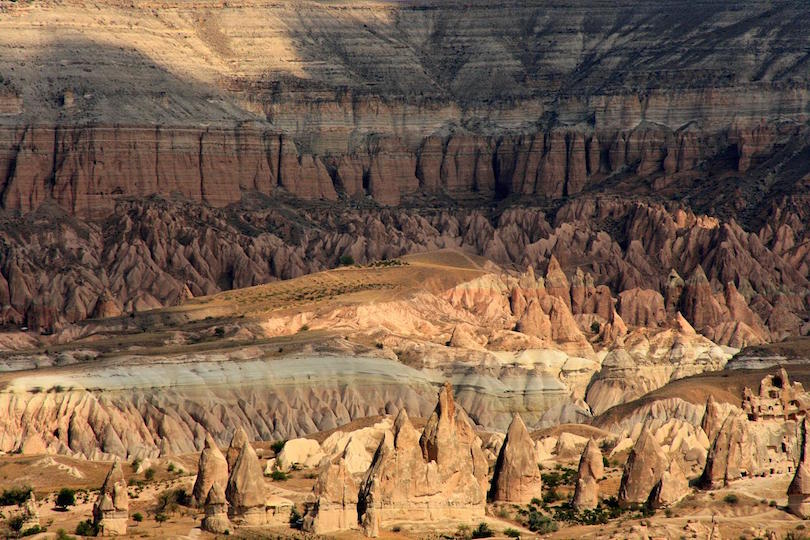
The fairy chimneys have been formed as the result of wind and water erosion of two different volcanic layers: a thick layer of tuff (consolidated volcanic ash) covered by a thin layer of basalt that is more resistant to erosion. Due to the ease of carving into the tuff, many of the fairy chimneys at Cappadocia have been hollowed out over the centuries to create houses, churches and storage facilities. Göreme National Park and the Rock Sites of Cappadocia were added to the World Heritage List in 1985.
Hierapolis-Pamukkale
Deriving from springs in a cliff almost 200 m high overlooking the plain, calcite-laden waters have created at Pamukkale (Cotton Palace) an unreal landscape, made up of mineral forests, petrified waterfalls and a series of terraced basins.

At the end of the 2nd century B.C. the dynasty of the Attalids, the kings of Pergamon, established the thermal spa of Hierapolis. The ruins of the baths, temples and other Greek monuments can be seen at the site. Hierapolis-Pamukkale was added to the World Heritage List in 1988.
You can read our previous article on Pamukkale and Hierapolis here.
There are 79 more sites in Türkiye on the UNESCO World Heritage Tentative List, properties that are considered to be cultural and/or natural heritage of outstanding universal value and therefore suitable for inscription on the World Heritage List.
UNESCO World Heritage – Turkey
Sources: UNESCO/LonelyPlanet/Explorer Turkey/Viator
Featured image by Nichola Chapman
This article was first published on 16 December 2021 and updated on 14 November 2023.

